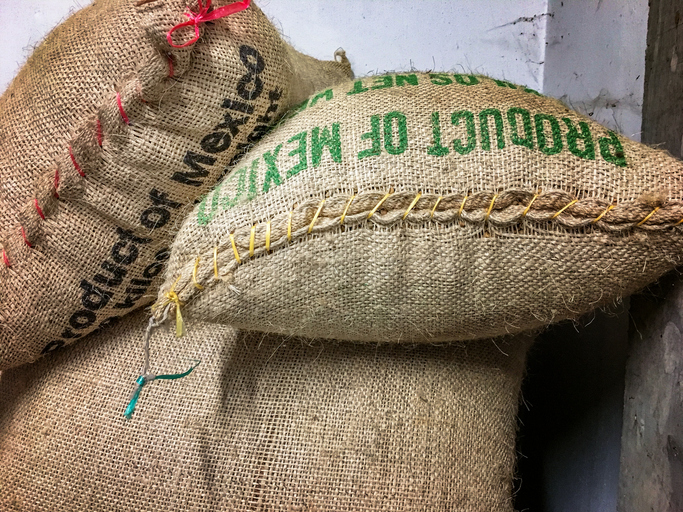Benefits and Trade-Offs of U.S. Manufacturing in Mexico

Cost efficiency and time efficiency are intertwined when assessing productivity of end-to-end supply chains. More North American businesses look to Mexico manufacturing as a potential saving grace from the well-known disruptions of recent offshore dealings in Asia, Europe and U.S. West Coast ports.
However, it’s crucial to understand the differences in business culture and expectations before making a permanent shift. For many companies, the upside is indisputable as tier-to-tier distances are lessened. But hastily partnering south of the border could create unnecessary havoc, making solutions seem a million miles away. Pablo Garza, head of growth and innovation for Mexico-based Akzent Group, has seen the good and bad for decades.
Logistics Benefits South of the Border
Because of the North American Free Trade Agreement (NAFTA) — the precursor to the U.S.-Mexico-Canada Agreement (USMCA) — Mexico has been involved in manufacturing for more than 30 years, Garza says, “though recent changes to supply chains have increased the attention given to our cross-border relationships.”
The new manufacturing plants coming to Mexico, including those of Tesla and others, are not a surprise, but the pace of the added business is, he adds. Noting other industries and businesses from China are making their way to Mexico, Garza says, “Man Wah, for example, is building a huge furniture plant north of Monterey to supply product to the U.S., like other companies.”
Shorter lead times result in better inventory management, enabling lean manufacturing and faster cycle times, Garza says. In addition, he adds, free trade agreements provide lower tariffs. “Time zones are better for North American supply chains, and our cultural similarities bring more benefits,” he says.
While these are the knowns, the unknowns, unlearned and unaddressed, keep uninformed business owners, CPOs and logistics directors up at night. Garza has had those conversations, after the fact.
Customs Brokerage Licensing Is Complex
Many companies think they can do business in Mexico the same way as it’s done in the U.S., he says. “The process of getting a customs brokerage license in Mexico is complex,” he says. “Of the more than 800 active licenses we do have, the amount is disproportionate to the approximately 11,000 the U.S. holds, an imbalance for our trade activity. Partnering with a highly competent Mexican customs broker is vital for a seamless operation.”
There are also other complexities to Mexico’s customs law, he states. “What’s different in comparison to Canada and the U.S. is our customs brokers are co-responsible for what is imported,” he says. In the event of an irregularity, enforcement can be quite punitive. Small infractions can lead to a fee and temporary cargo detainment; large infractions could negate the license altogether. “This is why we usually do a cargo inspection before the customs inspection,” he says.
Customs laws in Mexico often change; Garza advises customers to check with government regulation updates and modifications to achieve ongoing compliance. “Having robust and automated compliance processes with your customs broker will ensure a seamless and compliant cross border operation,” he says.
Location and Infrastructure Quandary
Increased business activity in Mexico brings another set of challenges. Garza says to expect some strain to the infrastructure. “Our highways, roads and bridges will be challenged,” he says, adding that over time, they will meet the demand. Concerns over site security and transport should also be addressed, but he recommends checking the origin and reliability of data regarding risk assessments as misinformation can compromise decision making.
In scheduling product and material transport across Mexico and over the border, companies will notice a shortage of trucks and drivers. Garza foresees that, in the near- to mid-term, “the quality of service from carriers and logistics providers will be highly elastic to price, though companies seeking low-cost solutions will be the most affected.”
Garza says an imbalance exists between northbound and southbound loads as more exports northbound than imports southbound create empty hauls. He suggests working with busy companies to avoid that predicament.
The benefits of utilizing Laredo, Texas, as a strategic distribution location, he says, include: (1) the most direct line from Mexico to the Midwest U.S., via Interstate 35, (2) the high volume of cross-border shipments, services and providers there and (3) greater logistics efficiency, as carriers can provide better price and conditions due to potential northbound-southbound imbalance.
Vetting the Process
When researching manufacturing and logistics companies in Mexico, Garza states that once organizations know their requirements, they should seek strategic partnerships.
However, he cautions about relying solely on the RFQ process. “You will receive similar offers, even similar pricing,” he says. “But it isn’t enough. Talk to them.” He recommends conducting video calls to put names to faces and get a feel for the reality of doing business with the companies.
“Companies may differ in price, merely by (US)$5, but if they don’t operate efficiently, are not well connected locally or disorganized internally, that $5 savings may cost you far more than if you had selected the higher-priced bid,” he says.
Converging Social Governance
Beyond seeking operational consistencies when manufacturing in Mexico, organizations should address environmental, social and governance (ESG) regulations, as their importance may differ between regions. Garza says the Mexican national sentiment about ESG is positive, with manufacturers embracing a shift in practices to better support sustainability.
“U.S. buyers create positive pressure for us to do better,” he says, adding that private companies “often ask to see our carbon footprint.” However, he adds, the Mexican government has yet to push Mexican businesses toward ESG.
The need for greater visibility and transparency in Mexico is an ongoing conversation, Garza says. “If we want U.S. companies to buy from us, we know we need to adapt,” he states, specifically citing software integration across supply chains.
Top Three Priorities to Mexico Manufacturing
Reconfiguring manufacturing, suppliers, distribution and transportation to Mexico is an undertaking, says Garza, requiring integral focus on three features: location, strategic partnerships and talent.
There are advantages and disadvantages to each hub in Mexico, Garza says, recommending that U.S. businesses “understand the differences and pair those with a strategic plan for each location and choose from there.” He adds that instead of searching for suppliers, search for strategic partnerships and build a “good pool of logistics, carriers and customers,” he says, thus creating a well-managed supply chain with a competent organization behind it.
Mexico has enormous talent, Garza says, but it’s about building the right team where the collective culture promotes working with people instead of for people. He says his team helps its U.S. partners overcome potential language barriers by employing bilingual customer-centric representatives.
“The key to attracting top talent in Mexico follows the same principles found in the U.S.: Provide the right working conditions, compensation packages and career paths for people with various skill levels, education and abilities,” Garza says. With this holistic approach applied to operational processes and the people involved, he says, the vision for a strong, successful U.S.-Mexico alliance is clear.


